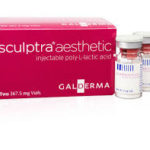The benefits from exercise are tremendous and their merits become even more significant as we get older. We also live in a time when it is not uncommon for a 45 or 50 year person to run half-marathons. There are probably more than people, both men and women, that are avid runners and exercise addicts today than ever before. While America may be suffering increasing rates of obesity, there is also a growing number of exercise enthusiasts.
One interesting phenomenon that I have seen in middle-age runners is what has become known as the ‘runner’s face’ or exercise-induced facial atrophy. This can occur naturally in anyone that has always been thin and begins to show their age, but the mechanism of running can induce this visual loss of facial volume. You may say that as the body slims and one’s weight drops, the face can become drawn inward or more gaunt. This is the result of the face losing fat or volume with the cheeks turning inward and the frown lines becoming more pronounced. Facial wrinkles can also become exaggerated from the grimacing of the facial muscles with the exertion of aerobic exercise.
This unwanted change in one’s facial appearance seems an odd contrast to the other favorable effects that running has on the body. This is a unique affliction in my observation that strikes middle-aged runners in their forties and fifties. It is the result of exercise-induced fat loss, particularly that of the buccal fat pads which lie right below the cheek bones, which causes loss of support of the cheek, temple and perioral (lip) skin. This volume-loss skin contracture causes the face to look skeletonized or too gaunt. In severe cases, the eyes can even look sunken in and the temples concave. It can be most magnified in runners who were thin from their youth. When body fat percentages get below 8% to 10% in women and 10% to 12% in men, facial volume loss can be seen.

Interestingly, the use of fat injections to the face is usually not a good idea for the runner. Besides the obvious likelihood that they may not have enough fat to harvest, the burning of calories from continued running makes fat injections last less than most of the synthetic injectable fillers.
Dr. Barry Eppley
Indianapolis, Indiana


